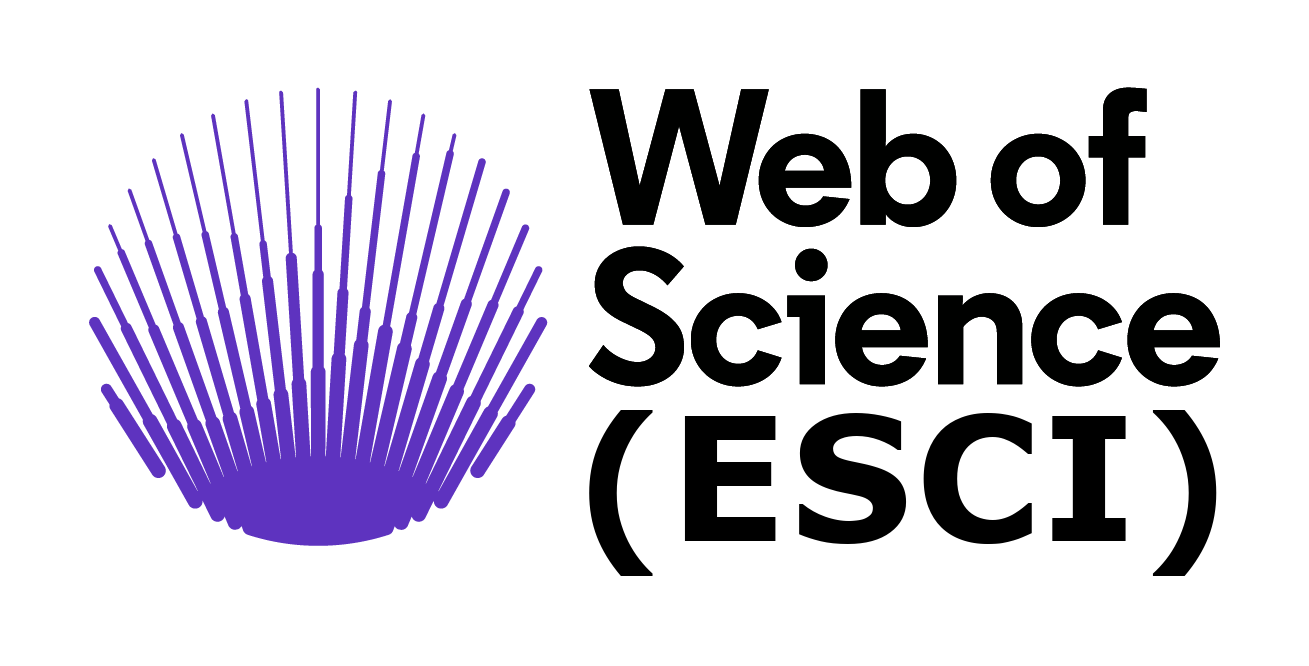Redes Neuronales Artificiales en la Industria del Petróleo y Gas: Análisis Bibliométrico (2020-2024)
DOI:
https://doi.org/10.29019/enfoqueute.1106Palabras clave:
Inteligencia Artificial, Redes Neuronales Artificiales, Operaciones petroleras, Predicciones, Gas natural, BibliometríaResumen
En la industria del petróleo y gas la aplicación de metodologías de predicción y estimación como las Redes Neuronales Artificiales ha representado una herramienta valiosa en todo el sistema petrolero. El objetivo de la revisión fue analizar, desde la perspectiva bibliométrica, la producción científica de los últimos cinco años sobre el uso de las Redes Neuronales Artificiales en esta industria. Se utilizó la base de datos de Scopus, filtrando la información por tiempo, temática, tipo de documentos y origen. Se utilizó una ecuación de búsqueda con palabras clave artificial neural network y oil and gas industry. La información se procesó mediante los softwares LibreOffice Clac, JASP y VOSviewer. Se obtuvo un total de 267 documentos, de los cuales el 59,9% correspondió a artículos científicos originales y el 56,0% fueron publicados en revistas científicas. China se posicionó como el país con mayor producción, mientras que los principales autores procedieron de Arabia Saudita. El 69,8% de las investigaciones se enfocaron en la subárea de Energía, y el 67,1% estuvieron afiliadas a empresas petroleras. Las áreas de aplicación incluyeron, además de las tradicionales (exploración, perforación, producción y yacimientos), el análisis de flujo, levantamiento artificial, emisiones, detección de anomalías, automatización, corrosión y detección de dióxido de carbono. Se concluye que, en los últimos cinco años, se ha profundizado la investigación sobre el uso de las RNA (redes neuronales artificiales) en la industria del petróleo y gas, especialmente en temas como la predicción de producción, reservas y estudios de yacimientos.
Descargas
Referencias
[1] F. Guillaume, “Petropolítica: Una teoría de la gobernanza energética,” in V Congreso Latinoamericano de Ciencia Política. Asociación Latinoamericana de Ciencia Política, Buenos Aires, Argentina, Jul. 25-30, 2010. [Online]. Available: https://cdsa.aacademica.org/000-036/617.pdf
[2] J. Ribeiro, R. Lima, T. Eckhardt and S. Paiva, “Robotic Process Automation and Artificial Intelligence in Industry 4.0 – A Literature review,” Procedia Comput. Sci., vol. 181, pp. 51-58, 2021. https://doi.org/10.1016/j.procs.2021.01.104
[3] D. Gupta and M. Shah, “A comprehensive study on artificial intelligence in oil and gas sector,” Environ. Sci. Pollut. Res., vol. 29, no. 34, pp. 50984-50997, Aug. 2021. https://doi.org/10.1007/s11356-021-15379-z
[4] A. Sircar, K. Yadav, K. Rayavarapu, N. Bist and H. Oza, “Application of machine learning and artificial intelligence in oil and gas industry,” Pet. Res., vol. 6, no. 4, pp. 379-391, Dec. 2021. https://doi.org/10.1016/j.ptlrs.2021.05.009
[5] T. D. Marín-Velásquez, “Tendencia corrosiva por CO2 del gas natural basada en su composición mediante Redes Neuronales Artificiales,” FIGEMPA: Invest. desarro., vol. 18, no. 2, p. e5989, Jul. 2024. https://doi.org/10.29166/revfig.v18i2.5989
[6] T. Li, “Research on Convolutional Neural Network in the field of oil and gas exploration,” OALib, vol. 10, no. 03, pp. 1-10, 2023. https://doi.org/10.4236/oalib.1109738
[7] A. Bruce, P. M. Wong, Y. Zhang, H. A. Salisch, C. C. Fung and T. D. Gedeon, “A state-of-the-art review of neural networks for permeability prediction,” The APPEA Journal, vol. 40, no. 1, pp. 341-354, 2000. [Online]. Available: https://www.publish.csiro.au/EP/AJ99019
[8] P. Saikia, R. D. Baruah, S. K. Singh and P. K. Chaudhuri, “Artificial Neural Networks in the domain of reservoir characterization: A review from shallow to deep models,” Comput. Geosci., vol. 135, p. 104357, Feb. 2020, https://doi.org/10.1016/j.cageo.2019.104357
[9] H. H. Alkinani, A. T. Al-Hameedi, S. Dunn-Norman, R. E. Flori, M. T. Alsaba and A. S. Amer, “Applications of Artificial Neural Networks in the petroleum industry: a review,” Presented at SPE Middle East Oil and Gas Show and Conference, Manama, Bahrain, Mar. 18-21, 2019. https://doi.org/10.2118/195072-ms
[10] N. Donthu, S. Kumar, D. Mukherjee, N. Pandey and W. M. Lim, “How to conduct a bibliometric analysis: An overview and guidelines,” J. Bus. Res., vol. 133, pp. 285-296, Sep. 2021. https://doi.org/10.1016/j.jbusres.2021.04.070
[11] A. F. Van Raan, “Advances in bibliometric analysis: research performance assessment and science mapping,” In Bibliometrics Use and Abuse in the Review of Research Performance, London: Portland Press Ltd., pp. 17-28, 2014. [Online]. Available: https://tinyurl.com/yde52438
[12] Y. Guo, Z. Hao, S. Zhao, J. Gong and F. Yang, “Artificial Intelligence in health care: bibliometric analysis,” J. Med. Internet Res., vol. 22, no. 7, p. e18228, Jul. 2020. https://doi.org/10.2196/18228
[13] P. Dhamija and S. Bag, “Role of artificial intelligence in operations environment: a review and bibliometric analysis,” The TQM Journal, vol. 32, no. 4, pp. 869-896, Mar. 2020. https://doi.org/10.1108/tqm-10-2019-0243
[14] R. Han, H. K. S. Lam, Y. Zhan, Y. Wang, Y. K. Dwivedi and K. H. Tan, “Artificial intelligence in business-to-business marketing: a bibliometric analysis of current research status, development and future directions,” Ind. Manag. Data Syst., vol. 121, no. 12, pp. 2467–2497, Aug. 2021. https://doi.org/10.1108/imds-05-2021-0300
[15] Y. Riahi, T. Saikouk, A. Gunasekaran and I. Badraoui, “Artificial intelligence applications in supply chain: A descriptive bibliometric analysis and future research directions,” Expert Syst. Appl., vol. 173, p. 114702, Jul. 2021. https://doi.org/10.1016/j.eswa.2021.114702
[16] J. K. Tamala, E. I. Maramag, K. A. Simeon, and J. J. Ignacio, “A bibliometric analysis of sustainable oil and gas production research using VOSviewer,” Clean. Eng. Technol., vol. 7, p. 100437, Apr. 2022. https://doi.org/10.1016/j.clet.2022.100437
[17] Z. Sadeqi-Arani and A. Kadkhodaie, “A bibliometric analysis of the application of machine learning methods in the petroleum industry,” Results Eng., vol. 20, p. 101518, Dec. 2023. https://doi.org/10.1016/j.rineng.2023.101518
[18] S. O. Baarimah, A. O. Baarimah, W. S. Alaloul, M. A. Bazel, F. Mohammed and M. Bawahab, “A bibliometric analysis on the applications of Artificial Intelligence in Petroleum Engineering,” In 4th Int. Conf. Data Anal. Bus. Ind. (ICDABI), IEEE, Bahrain, 2023, pp. 152-159. https://doi.org/10.1109/icdabi60145.2023.10629472
[19] S. M. A. Balushi and Y. B. Arshad, “Trends and patterns in Artificial intelligence research for oil and gas industry: a bibliometric review,” Int. J. Prof. Bus., vol. 8, no. 6, p. e02090, Jun. 2023. https://doi.org/10.26668/businessreview/2023.v8i6.2090
[20] F. Rozo-García, “Revisión de las tecnologías presentes en la industria 4.0,” Rev. UIS Ing., vol. 19, no. 2, pp. 177-191, May. 2020. https://doi.org/10.18273/revuin.v19n2-2020019
[21] M. G. M. Abdolrasol et al., “Artificial Neural Networks based optimization techniques: a review,” Electronics, vol. 10, no. 21, p. 2689, Nov. 2021. https://doi.org/10.3390/electronics10212689
[22] A. Xu, H. Chang, Y. Xu, R. Li, X. Li, and Y. Zhao, “Applying artificial neural networks (ANNs) to solve solid waste-related issues: A critical review,” Waste Manag., vol. 124, pp. 385-402, Apr. 2021. https://doi.org/10.1016/j.wasman.2021.02.029
[23] C. Lu, S. Li, and Z. Lu, “Building energy prediction using artificial neural networks: A literature survey,” Energy Build., vol. 262, p. 111718, May. 2022. https://doi.org/10.1016/j.enbuild.2021.111718
[24] M. Pérez-Gomariz, A. López-Gómez and F. Cerdán-Cartagena, “Artificial Neural Networks as Artificial Intelligence technique for energy saving in refrigeration systems. A review,” Clean Technol., vol. 5, no. 1, pp. 116-136, Jan. 2023. https://doi.org/10.3390/cleantechnol5010007
[25] O. A. Martínez, “La importancia vital de publicar en revistas de alto impacto para el avance científico en Latinoamérica,” Rev. Sci., vol. 8, no. 28, pp. 10–20, May. 2023. https://doi.org/10.29394/scientific.issn.2542-2987.2023.8.28.0.10-20
[26] F. Ganga, J. Castillo and L. Pedraja-Rejas, “Factores implicados en la publicación científica: una revisión crítica,” Ingeniare. Rev. chil. ing., vol. 24, no. 4, pp. 615-627, Oct. 2016. https://doi.org/10.4067/s0718-33052016000400007
[27] G. Cáceres, “La importancia de publicar los resultados de Investigación,” Rev. Fac. Ing., vol. 23, no. 37, pp. 7-8, Dec. 2014. [Online]. Available: https://www.redalyc.org/articulo.oa?id=413937008001
[28] K. Hauss, “What are the social and scientific benefits of participating at academic conferences? Insights from a survey among doctoral students and postdocs in Germany,” Res. Eval., vol. 30, no. 1, pp. 1–12, Aug. 2020. https://doi.org/10.1093/reseval/rvaa018
[29] H. Vasudevan, S. Zolghadri and M. A. Makarem, “Introduction to oil, gas, and petrochemical industries: importance to the current world,” In Crises in Oil, Gas and Petrochemical Industries, pp. 25-46, 2023. https://doi.org/10.1016/b978-0-323-95154-8.00003-7
[30] S. Saraji and D. Akindipe, “The role of the oil and gas industry in the energy transition,” In Sustainability in the Oil and Gas Sector, pp. 33-63, 2024. https://doi.org/10.1007/978-3-031-51586-6_3
[31] X. Zheng et al., “Progress and prospects of oil and gas production engineering technology in China,” Pet. Explor. Dev., vol. 49, no. 3, pp. 644–659, Jun. 2022. https://doi.org/10.1016/s1876-3804(22)60054-5
[32] L. Kuang et al., “Application and development trend of artificial intelligence in petroleum exploration and development,” Pet. Explor. Dev., vol. 48, no. 1, pp. 1-14, Feb. 2021. https://doi.org/10.1016/s1876-3804(21)60001-0
[33] P. Panja, W. Jia, A. Nelson and B. McPherson, “Application of convolutional long short-term memory for spatio-temporal forecastings of hydrocarbon saturations and pressure in oil fields,” Petrol. Sci. Technol., pp. 1-25, Sep. 2024. https://doi.org/10.1080/10916466.2024.2400303
[34] A. Babour and O. Alzamzami, “International publication trends and collaboration impact on the scientific research of Saudi Arabia,” J. Scientometric Res., vol. 10, no. 3, pp. 328-336, Jan. 2022. https://doi.org/10.5530/jscires.10.3.49
[35] M. R. AlShareef, I. A. Alrammah, N. A. Alshoukani and A. M. Almalik, “The impact of financial incentives on research production: Evidence from Saudi Arabia,” Scientometrics, vol. 128, no. 5, pp. 3067-3089, Apr. 2023. https://doi.org/10.1007/s11192-023-04692-8
[36] B. Plackett, “Chinese research collaborations shift to the Belt and Road,” Nature, vol. 630, no. 8015, pp. S10-S11, Jun. 2024. https://doi.org/10.1038/d41586-024-01598-0
[37] Z. Zhang, J. E. Rollins, and E. Lipitakis, “China’s emerging centrality in the contemporary international scientific collaboration network,” Scientometrics, vol. 116, no. 2, pp. 1075-1091, Jun. 2018. https://doi.org/10.1007/s11192-018-2788-5
[38] O. Al-Tabbaa and S. Ankrah, “‘Engineered’ University-Industry collaboration: a social capital perspective,” Eur. Manag. Rev., vol. 16, no. 3, pp. 543-565, Mar. 2018. https://doi.org/10.1111/emre.12174
[39] K. Atta-Owusu, R. D. Fitjar and A. Rodríguez-Pose, “What drives- university-industry collaboration? Research excellence or firm collaboration strategy?,” Technol. Forecast. Soc. Change, vol. 173, p. 121084, Dec. 2021. https://doi.org/10.1016/j.techfore.2021.121084
[40] P. Borges et al., “University-Industry Cooperation: a peer-reviewed bibliometric analysis,” Economies, vol. 10, no. 10, p. 255, Oct. 2022. https://doi.org/10.3390/economies10100255
[41] A. Mikhailov, D. Puffal and M. Santini, “University-Industry relations and industrial innovation: evidence from Brazil,” J. technol. manag. innov., vol. 15, no. 3, pp. 6-16, Oct. 2020. https://doi.org/10.4067/s0718-27242020000300006
[42] C. Lisée, V. Larivière and É. Archambault, “Conference proceedings as a source of scientific information: A bibliometric analysis,” J. Assoc. Inf. Sci. Technol., vol. 59, no. 11, pp. 1776-1784, Jun. 2008. https://doi.org/10.1002/asi.20888
[43] W. Pérez and R. Ungerfeld, “Presentaciones en congresos: ¿cuál es su objetivo, y cómo deben considerarse en una evaluación?,” Veterinaria (Montevideo), vol. 57, no. 216, Oct. 2021. https://doi.org/10.29155/vet.57.216.6
[44] S. Wroblewski and N. Ussenbayev, “A new paradigm for meetings and events studies,” Menadzment u hotelijerstvu i turizmu, vol. 10, no. 1, pp. 107-123, 2022. https://doi.org/10.5937/menhottur2201107w
[45] A. Mirzaei-Paiaman and S. Salavati, “The application of Artificial Neural networks for the prediction of oil production flow rate,” Energy Sources, vol. 34, no. 19, pp. 1834-1843, Jul. 2012. https://doi.org/10.1080/15567036.2010.492386
[46] A. Kohli and P. Arora, “Application of Artificial Neural Networks for Well Logs,” presented at IPTC 2014: Int. Petrol. Technol. Conf., Doha, Qatar, Jan. 19-22, 2014. https://doi.org/10.3997/2214-4609-pdb.395.iptc-17475-ms
[47] S. B. Ashrafi, M. Anemangely, M. Sabah and M. J. Ameri, “Application of hybrid artificial neural networks for predicting rate of penetration (ROP): A case study from Marun oil field,” J. Pet. Sci. Eng., vol. 175, pp. 604-623, Apr. 2019. https://doi.org/10.1016/j.petrol.2018.12.013
[48] A. Alexeyenko, “Predicting UCS with Neural Network and Benchmarking Actual ROP for further drilling optimization,” presented at Abu Dhabi Int. Petrol. Exhib. Conf., Abu Dhabi, United Arabian Emirates, Oct. 31- Nov. 3, 2022. https://doi.org/10.2118/211770-ms
[49] S. Borozdin et al., “Drilling problems forecast system based on Neural Network,” SPE ann. Caspian technical conf., Oct. 21-22, 2020. [Online]. https://doi.org/10.2118/202546-ms
[50] W.-H. Xia et al., “Intelligent risk identification of gas drilling based on nonlinear classification network,” Petrol. Sci., vol. 20, no. 5, pp. 3074-3084, Oct. 2023. https://doi.org/10.1016/j.petsci.2023.04.003
[51] R. Al Dwood, Q. Meng, A.-W. Ibrahim, W. A. Yahya, A. G. Alareqi and G. AL-Khulaidi, “A novel hybrid ANN-GB-LR model for predicting oil and gas production rate,” Flow Meas. Instrumen., vol. 100, p. 102690, Dec. 2024. https://doi.org/10.1016/j.flowmeasinst.2024.102690
[52] A. George, “Predicting oil production flow rate using Artificial Neural Networks - The Volve Field Case,” presented at SPE Nigeria Ann. Int. Conf. Exhib., Lagos, Nigeria, Aug. 2-4, 2021. https://doi.org/10.2118/208258-ms
[53] M. I. Sharipov, “Development of neural network for control production process in oil and gas fields,” Mat. Sci. Eng., vol. 971, no. 4, p. 042069, Nov. 2020. https://doi.org/10.1088/1757-899x/971/4/042069
[54] B. Andrews, A. Chakrabarti, M. Dauphin and A. Speck, “Application of machine learning for calibrating gas sensors for methane emissions monitoring,” Sensors, vol. 23, no. 24, p. 9898, Dec. 2023. https://doi.org/10.3390/s23249898
[55] M. Kayakuş, “Forecasting carbon dioxide emissions in Turkey using machine learning methods,” Int. J. Glob. Warm., vol. 28, no. 3, p. 199, 2022. https://doi.org/10.1504/ijgw.2022.126669
[56] N. Nayak, A. Anarghya and M. Al Adhoubi, “A study on the behavior of CO2 corrosion on pipeline using computational fluid dynamics, experimental and artificial neural network approach,” Eng. Res. Exp., vol. 2, no. 2, p. 025012, Apr. 2020. https://doi.org/ 10.1088/2631-8695/ab69d6
[57] S. Peng, Z. Zhang, E. Liu, W. Liu and W. Qiao, “A new hybrid algorithm model for prediction of internal corrosion rate of multiphase pipeline,” J. Nat. Gas Sci. Eng., vol. 85, p. 103716, Jan. 2021. https://doi.org/10.1016/j.jngse.2020.103716
[58] A. A. Alghamdi, N. S. Almutairi, A. Muslim, H. Khaldi and A. Abdulraheem, “Development of a gas flow rate model for multi-stage choke system in HPHT gas wells using Artificial Intelligence,” presented at SPE Eur. Feat. 82nd EAGE Conf. Exhib., Amsterdam, Netherlands, Oct. 18-21, 2021. https://doi.org/10.2118/205163-ms
[59] M. S. Shadloo, A. Rahmat, A. Karimipour and S. Wongwises, “Estimation of pressure drop of two-phase flow in horizontal long pipes using Artificial Neural Networks,” J. Energy Res. Technol., vol. 142, no. 11, Jul. 2020. https://doi.org/10.1115/1.4047593
[60] J. A. Rodríguez, M. Torres and S. M. Samana, “Principales herramientas de la inteligencia artificial para industrias. Una revisión de Literatura,” Innov. Softw., vol. 5, no. 2, pp. 44-63, Sep. 2024. https://doi.org/10.48168/innosoft.s16.a154
Descargas
Publicado
Número
Sección
Licencia
Derechos de autor 2025 Los Autores

Esta obra está bajo una licencia Creative Commons Reconocimiento 3.0 Unported.
Los autores retienen todos sus derechos (© copyright).
- Los autores retienen sus derechos de marca y patente, y también sobre cualquier proceso o procedimiento descrito en el artículo.
- Los autores retienen el derecho de compartir, copiar, distribuir, ejecutar y comunicar públicamente el artículo publicado en Enfoque UTE (por ejemplo, colocarlo en un repositorio institucional o publicarlo en un libro), siempre que se dé el reconocimiento de su publicación inicial en la revista Enfoque UTE.
- Los autores retienen el derecho a hacer una posterior publicación de su trabajo, de utilizar el artículo o cualquier parte de aquel (por ejemplo: una compilación de sus trabajos, notas para conferencias, tesis, o para un libro), siempre que indiquen la fuente de publicación (autores del trabajo, revista, volumen, número y fecha).
























